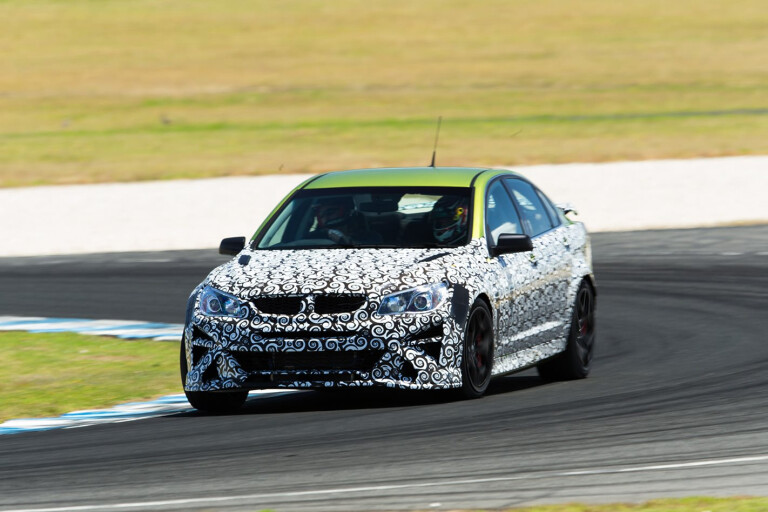
Yes, I know. I’m a very lucky boy: I got to sample a HSV W1 on the road, albeit only briefly. So briefly, in fact, that we didn’t even have time to get photography. That’ll come soon.
Normally, to get a crack at something as rare and exclusive, you’d need to buy your own. Except you can’t; they’re all sold. And though it depresses me to say it, many punters who do buy their own W1 won’t ever drive them.
Because this car is so special, such a unicorn of a thing, that many of them will simply be trucked home, stuck in a shed under the optional, tailored HSV car-cover and guarded jealously.
And even if they do get driven enough to scrape the little rubber teats off the R-Specs and actually bed the engine in, I’m tipping they won’t be driven in q-u-i-t-e the same way as I got to while running acceleration times on this one. In fact, not even nearly. So yes, lucky me.
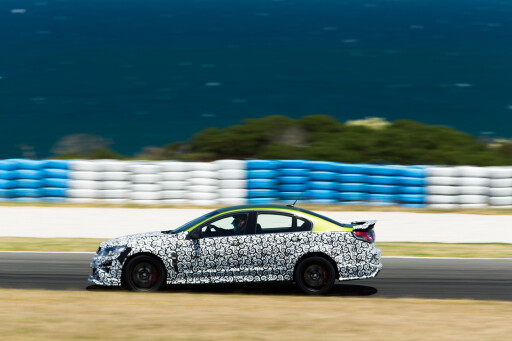 So is the W1 the big deal we were all expecting it to be? Well, it certainly has the attitude we were predicting. And even though we all knew it was going to be some kind of compromise in some pretty important areas, is it actually as compromised as predicted? The answer is one of those column A, column B deals.
So is the W1 the big deal we were all expecting it to be? Well, it certainly has the attitude we were predicting. And even though we all knew it was going to be some kind of compromise in some pretty important areas, is it actually as compromised as predicted? The answer is one of those column A, column B deals.
One of the biggest compromises as I see it is that the R-Spec tyres, while quite brilliant in the dry are very likely to be a total pain in the whatsit in the wet.
I didn’t get to try them in the damp, but based on what I know about such things (not to mention that HSV freely admits they’ll be under-performers in the rain) I’d be leaving my W1 at home if the weather-girl is tipping anything other than brilliant sunshine.
The solution, of course, is a second set of wheels and `normal’ tyres, saving the factory R-Specs to maintain the car’s originality by sitting in the corner and going hard.

Okay, a street circuit demands a softer set-up than a smooth, manhole-cover-free dedicated circuit, and a W1 weighs a fair bit more than the carbon-and-helium silhouette-formula cars that are our V8s, but you get the drift.
Of course, with the V8 Supercar-spec SupaShock dampers, you also lose the ability to tailor the damper settings as you can with the alternative MRC set-up. There’s no `Tour’ mode in the W1, it’s set to `Kill’ twenty-four-seven.
Strangely, this is probably the real yin-yang component of the W1’s make-up. If an AFL match is a game of four quarters, then the W1 is most definitely a car of two halves.
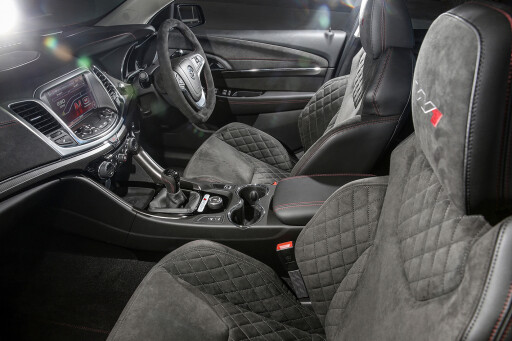 From the front seat, the W1 is surprisingly civilised on first acquaintances. There’s a fair bit of chat from the front end, a function of the different offsets and scrub radiuses that the 265 fronts have allowed.
From the front seat, the W1 is surprisingly civilised on first acquaintances. There’s a fair bit of chat from the front end, a function of the different offsets and scrub radiuses that the 265 fronts have allowed.
The steering still has that initial degree of artificiality as you knock it off centre and the electric-assistance motor wakes up, but the flat attitude and superb grip of the R-specs means that the W1 is both pointy and accurate through the helm. Feels great, actually.
But it’s the ride quality that is probably the biggest surprise. Fundamentally, the W1 takes a country back-road in its stride. Until you swap drivers and pull up a chair in the rear seat, And, suddenly, here endeth Column A.
I honestly cannot recall a car in recent history where the rear seat ride is so violently unpleasant. The ride is choppy beyond belief and the racket, both tyre and exhaust, is heinous.
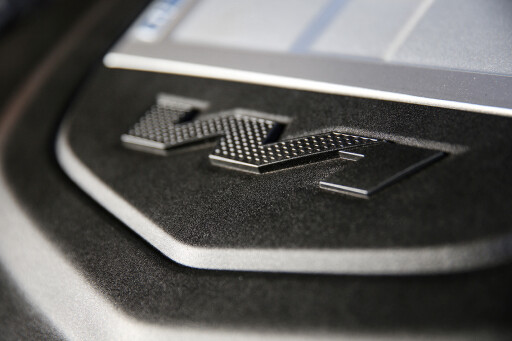 If you are lucky enough to own a W1 don’t, whatever you do, ever allow yourself to be convinced to ride in the back. And if it’s going to be a family car, prepare to have the kids put themselves up for adoption.
If you are lucky enough to own a W1 don’t, whatever you do, ever allow yourself to be convinced to ride in the back. And if it’s going to be a family car, prepare to have the kids put themselves up for adoption.
The other observation is that the longer you spend at the wheel, the less impressive that front-seat ride becomes, too. What starts out as complex and detailed info about what the front end is doing, eventually becomes a bit of an assault as the W1 struggles to cope with lumpier bits of the planet.
See, while the dampers are good enough to iron out the pattery, small amplitude stuff, they can’t do squat about those mighty spring rates and their consequences when it comes to bigger deflective forces. And the longer you drive the W1, the more obvious this becomes.
Here, I suspect, is a great example of familiarity breeding contempt. It also suggests that the non-W1 version of the GTSR is likely to be the better road car, especially as it comes with $60,000 worth of petrol.
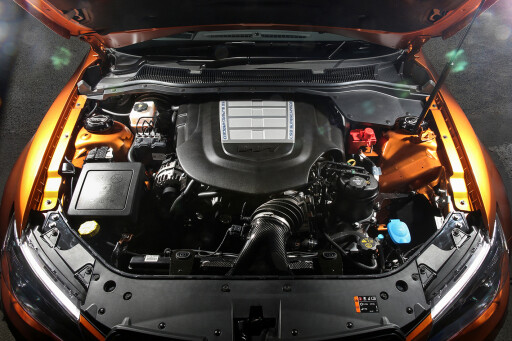 Of course, the W1 was always going to be about the driveline and, in this department, the compromises are pretty much zilch. Right from the get-go, this car feels up for it; there’s even a slight lope to the idle that tells you all you need to know about the camshaft.
Of course, the W1 was always going to be about the driveline and, in this department, the compromises are pretty much zilch. Right from the get-go, this car feels up for it; there’s even a slight lope to the idle that tells you all you need to know about the camshaft.
And it just gets better from there. It hollers, it spits and it generally feels pretty dangerous, and when you do spank it back, it gets even angrier and more intent on hurling you into the next postcode.
The top-end rush has to be felt to be believed and, where some LSA-powered cars can feel like they’re all over and done with by 6000rpm, the LS9 in the W1 is still cracking on like a good `un at that point.
In fact, to get it to go as fast as it can, you need to uses every one of the 6600rpm on offer, because the extra poke is stacked up in that part of the tacho.
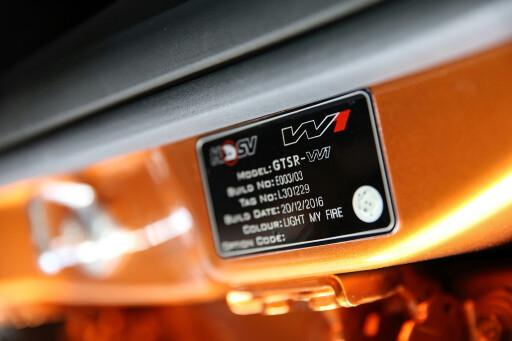 What’s a bit strange is that we couldn’t get it to go much faster than a GTSR. Sure, we nailed a 4.5 to 100km/h which is handy for a manual, but it isn’t a huge leap forward.
What’s a bit strange is that we couldn’t get it to go much faster than a GTSR. Sure, we nailed a 4.5 to 100km/h which is handy for a manual, but it isn’t a huge leap forward.
That said, the 400m time of 12.3 is a fair bit quicker and, again, suggests that the extra grunt is way up on the top shelf where it can propel to thing to a stonking 196-plus kliks through the traps.
A couple of other things to consider in all this: The R-Specs certainly helped in the take-off department, but ultimately, you’re at the mercy of the inertia-versus-grip-versus-torque thing.
Also, even though the W1 is fitted with launch control, the nice people at HSV asked us not to use it. So we didn’t. And there’s more to think about. Like, the first three gears in the W1 are taller than those in the normal GTSR. And while there’s an extra 39kW on tap over a GTSR, in percentage terms that’s a fairly nominal (stay with us) hike of just nine per cent or so…significant but not earth-shattering.
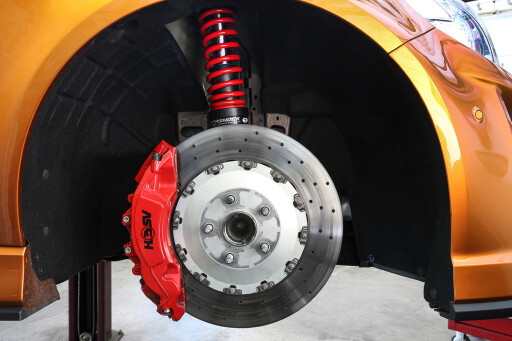 Look, we’re not making excuses here (even if the strip we used was somewhat less than optimal on the day) and it remains that on the road, if you’re prepared to explore the upper rev range, the W1 does have more to offer than an LSA-powered HSV. It’s not just faster, either; it’s raspier, more aggressive and vastly more urgent.
Look, we’re not making excuses here (even if the strip we used was somewhat less than optimal on the day) and it remains that on the road, if you’re prepared to explore the upper rev range, the W1 does have more to offer than an LSA-powered HSV. It’s not just faster, either; it’s raspier, more aggressive and vastly more urgent.
I could tell you what you want to hear, which is that the W1 is the best Aussie made road-car ever. And while it’s certainly up there, it isn’t perfect. But as a thank-you note from HSV to the V8, rear-drive cars that we are about to lose, then the W1 is some kind of masterpiece.
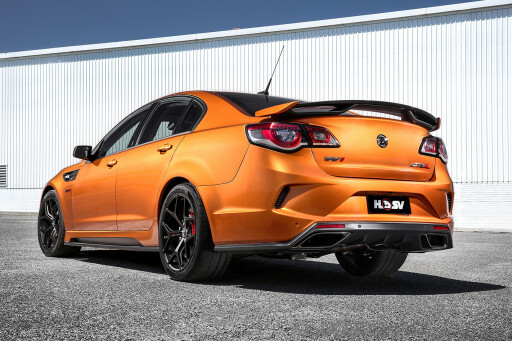 Star Rating: 4.5/5
Star Rating: 4.5/5
SPECS
Engine: 6162cc V8, OHV, 16v, supercharger
Power: 474kW @ 6500rpm
Torque: 815Nm @ 3900rpm
Weight: 1895kg
0-100km/h: 4.5sec (tested)
Price: $169,990

COMMENTS